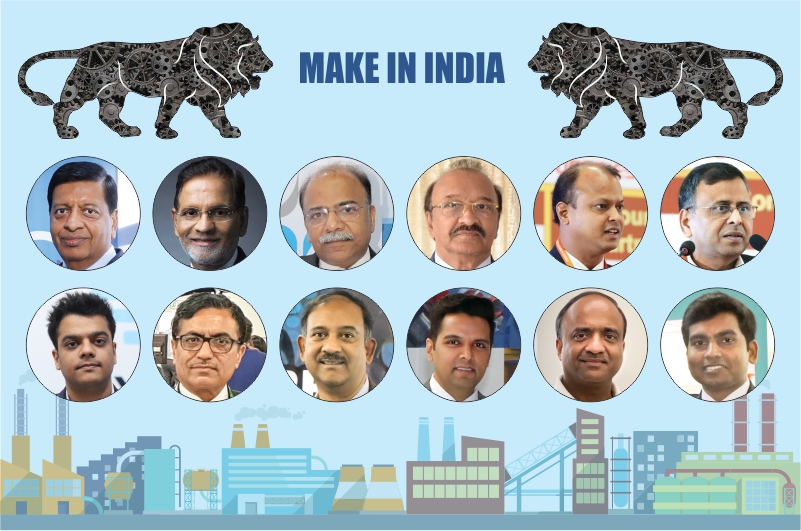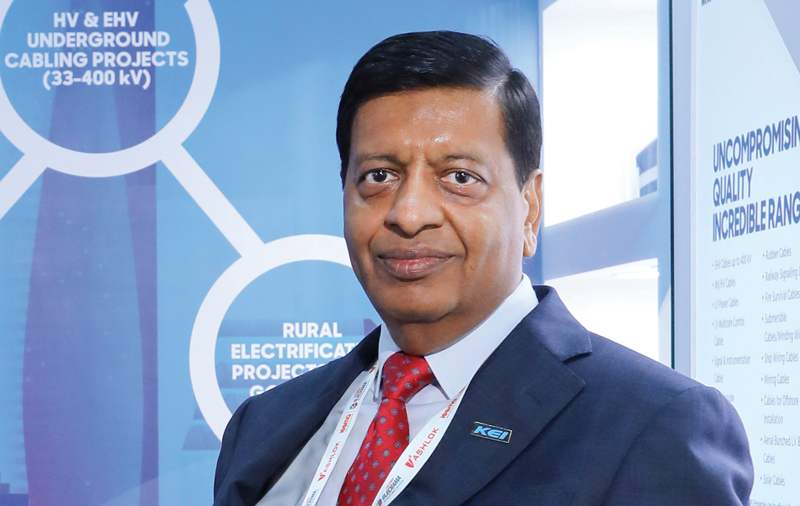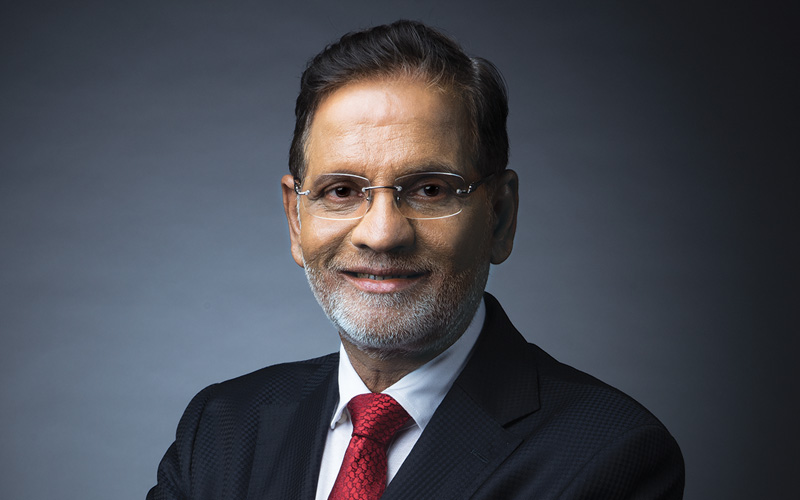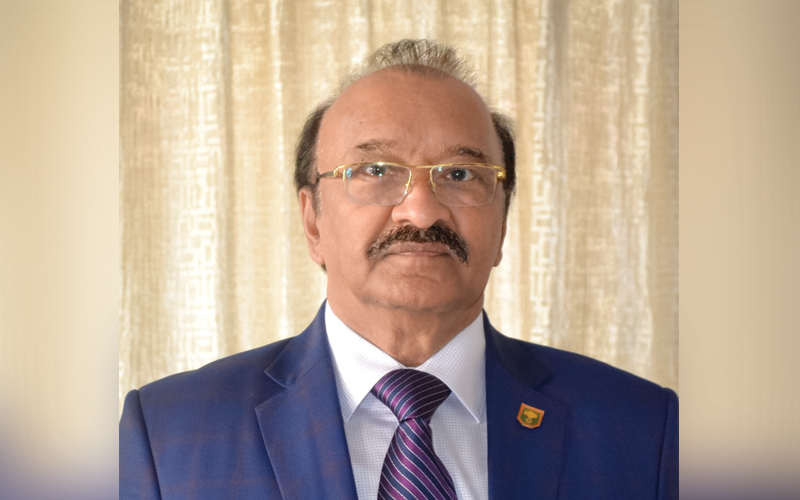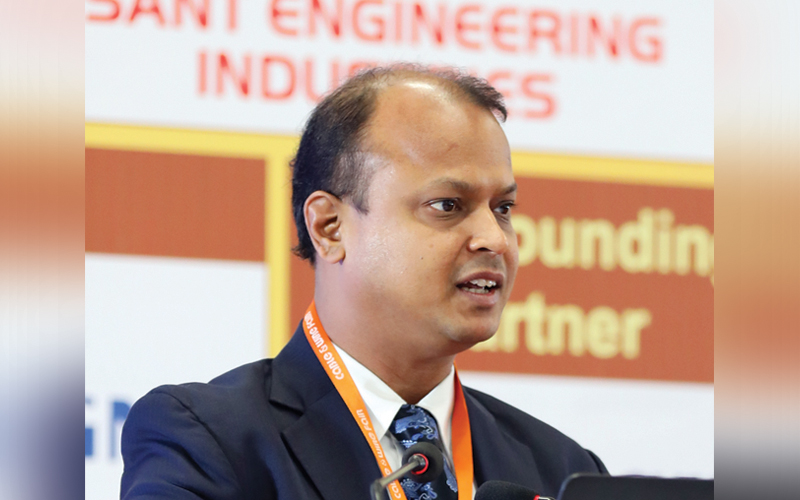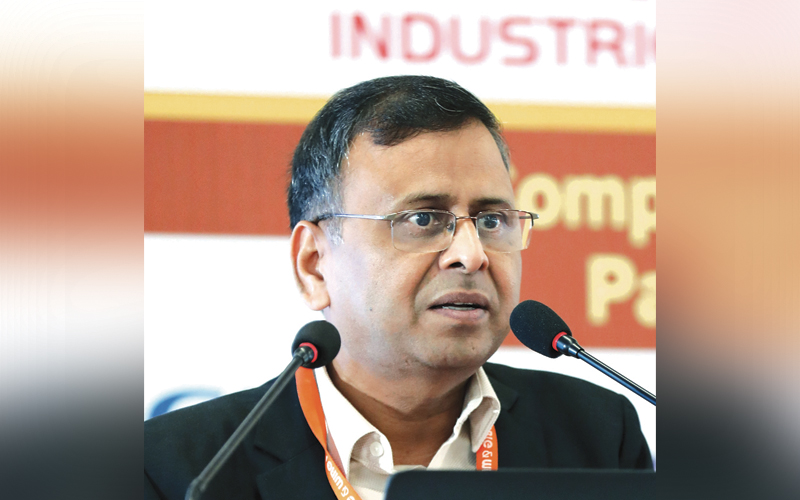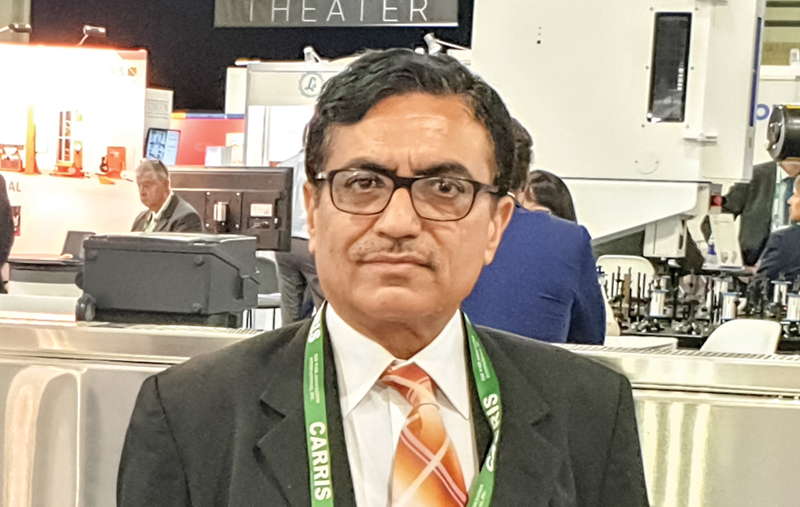Narendra Modi’s ascent to power in 2014 saw the grand launch of the “Make in India” initiative. This initiative was regarded as the coming-of-age of India’s manufacturing potential. Under this initiative, the government has been aggressively pushing for the “Make in India” program by offering domestic and foreign manufacturers policy and fiscal incentives to manufacture locally.
Although the COVID-19 pandemic has led many people to present downgraded projections about India’s GDP, the disruption from this pandemic has offered India a bigger opportunity to achieve the “Make in India” dream – to reinvent itself as a manufacturing powerhouse. COVID-19 has forced us to isolate ourselves from the world, making us critically aware of our own supply chain. Under the circumstances, buying locally produced products will surely boost our economy, support our local businessmen or our farmers and keep money in the local economy by recirculating it. For this to happen, the mindset of the Indian consumer must first change: We should go for domestic vacations instead of international destinations and buy more Indian brands.
When we buy local products, money is spent locally. This money can, in turn, be re-spent within the country, raising the overall level of economic activity and paying more salaries. This re-circulating of money leads to an increase of economic activity. Local spending also encourages entrepreneurship. Purchases made from large businesses like international supermarkets or the branded group of companies typically cause money to leak out of our country. It may be mentioned that the government’s lockdown exit plan to revive the economy focuses on strengthening the “Make in India” program and boosting the manufacturing sector.
But we need to keep in mind that while we strive to realize the ‘Make in India’ dream, the government must increase import duty to make bringing in products expensive. It must work on measures to encourage local entrepreneurs to challenge ecommerce giants like Amazon and the Walmart-owned Flipkart. It must create a level playing field for the local manufacturers.
As rightly said by Mr. Vikas Yadav, Director, Vikas Spool Private Limited, “We must dream of an Indian marketplace that prefers Indian goods. This dream can be realized through the manifestation of a strong sense of nationalism – a very long process that demands a lot of commitment from the government and private businesses and support of all the citizens. Alternatively, the government can frame import policies that strengthen local producers.”
In the Union Budget 2020, Finance Minister Nirmala Sitharaman said that the policy of ‘Make in India’ has started reaping dividends. She said, “Under Make in India initiative, well laid out customs duty rates were pre-announced for items like mobile phones, electric vehicles, and their components. This has ensured a gradual increase in domestic value addition capacity in India.” We hope the government will leave no stone unturned to achieve the ‘Make in India” dream.
The infrastructure and supply chain for the products made in India for Indians can be used for exports too. Countries now want to diversify their supply chain out of China. Japan recently spent $2.2B on getting Japanese companies to exit China These companies are now looking for a new place for their supply chains.
India can position itself as an alternative to China. To put it in the words of Mr. Ashwani Gupta, Director, Vividh Group, “The present pandemic has exposed the world’s overdependence on China in the global supply chain. Over the next few months, we will witness a large-scale restructuring, and a number of companies will probably look to set up their manufacturing units in India. The Indian manufacturing sector is well-placed to capitalize on this opportunity. A key area of improvement has to be the ease of doing business. If we want companies to move their manufacturing units to India, then we unequivocally have to make it easy for them to do business here – from land acquisition to bureaucratic red tape and from labor laws to taxation.”
It is worth recalling that in the early 1990s, a popular song “Made in India” was released by Alisha Chinai. This song was an instant hit, giving birth to Indi-pop and selling more than 5 million copies. The time has come to sing this song for India’s manufacturing sector. Yes, new industries and millions of new jobs have to be created.
As the world grapples with Corona virus, Wire & Cable India interviewed key industry players about the government’s “Make in India” initiative and the steps that Indian manufacturers should take to make India a global manufacturing hub.
Here are some of the excerpts from these interviews.
Mr. Anil Gupta, Chairman and Managing Director, KEI Industries Limited
This is for the first time that the country is facing an extreme pandemic situation. We have witnessed several ups and downs on the market; and we have seen markets bouncing back. India is a developing nation and in order to build it, it is absolutely necessary to resurrect the market. With development come up new opportunities. One of the key sectors that are pillars to this fast development is the infrastructure sector (real estate along with construction of new roads and highways), and we closely cater to this segment. Once this situation comes to a still, there will be ongoing power generating and infrastructural projects which will be beneficial for us. In the coming months, it will be crucial for the government to take necessary steps to facilitate the normal functioning of the markets and stabilize the power/energy industry.
The rapidly growing threat revolving around COVID-19 has severely impacted business and investors across the globe. This pandemic has posed the risk of disruption in global supply chains which has resulted in significant loss of revenue thereby adversely crashing economies around the world. To rise up from this situation, companies must consider formulating pandemic-specific policies to minimize the disruptions. I think we can turn this crisis into an opportunity and make India a global manufacturing hub if we act together with the right measures. India needs to focus more on infrastructure and the global manufacturing supply chain, which can be amplified through effective measures, than on reliance on other markets and economies. The government has announced a continuity plan to start exports and cut down on imports. The government must also establish effective communications through business-friendly schemes to pitch India as a global manufacturing hub. Since the prices of all commodities is also going to be affected, the government should ease pressure on companies to invest more on equipment, raw materials and employees.
Mr. Shreegopal Kabra, MD and Group President, RR Global
A ray of light can be found even in the darkest tunnel. COVID-19 has made one thing very clear: To thrive in the post-COVID world, the way we do business and our responsibility as citizens and business owners for the country will have to change for the better. The economy has never hit the brakes quite like this before; however, the tide will turn. If the government controls the spread of the virus in a more effective manner, we would see a more organised functioning of the economy, hopefully from October.
There are plenty of new opportunities, but we will have to adopt a new approach to seize them. The post-COVID customer will expect a lot more from the brand in terms of quality, safety, service, and availability. We will have to live up to our customers’ expectations. For that to happen, Indian industries will have to invest a lot in R&D, churning out products of world-class quality and helping Indian brands compete with the very best across the world.
Like I said earlier, the lockdown imposed by the government is in fact a ‘lock opener’. It has helped us open our minds to a more caring and beautiful world. This unfortunate experience has offered us many important lessons.
Talks of making India a global manufacturing hub has been doing the rounds for a while now. The government’s ambitious ‘Make in India’ initiative is a huge step towards realizing the nation’s potential. I hope India will soon be able to counter its dependence on China by mass producing high-quality products.
We still have a long way to go towards realizing our economic potential, and COVID-19 has given us the impetus to go ahead. However, to make India a global manufacturing hub, the government needs to develop business friendly policies, ease of doing business, and a more tax friendly economy, particularly for export-based industries. These efforts have to be made keeping in mind long-term goals for the next 10-20 years.
Industry leaders must never lose sight of improvisation. They will have to focus on developing high-quality products. They will have to address issues such as how their products can be developed into brands and how those brands, in turn, can continue to communicate with the end user, how their companies can help establish a better work-life balance for their employees, and how they can retain the very best in India or procure the best from overseas.
We have a few examples from various industries of how Indian brands can compete with the very best from pretty much anywhere. Now is the time for the government and industries to go for drastic changes. We will have to work in tandem with each other if we want India to become the new manufacturing hub of the world.
Mr. Nirmal Saraf, Managing Director, Nirmal Group
The international market has many opportunities to offer. India has a low presence on the global market. However, with international supply chains being reorganized and supply chain managers looking to diversify their risks by moving some of the sourcing from China to other countries, there is a huge opportunity to increase the presence on the international market. However, this opportunity will not fall into our lap. We will have to make special efforts to make that happen. There are competitors (in other countries) who will fight tooth and nail to grab this opportunity. We will have to make our approach more customer-centric and focus on all the needs of the customer howsoever insignificant they may seem. Excellent product quality, appropriate and required packaging and responsive and caring services will put us ahead of the competition and help us grow.
In addition, with the government pushing for use of Indian products, the unfair and predatory competition from overseas vendors will also become less intense with customers preferring local products over imported ones.
India can be self-reliant and simultaneously be the world’s factory. We have access to technology, a very young workforce, excellent communication capability, and a legal system that most of the world is comfortable with.
What holds us back is our archaic labor laws (thankfully reforms have started) and an overload of compliance which forces more time to be spent on compliance than on taking care of the customer’s needs. Another big deterrent to entrepreneurship is the criminalization of business errors which frightens people away from being job providers. The government needs to trust the businesses and change its stance from ‘guilty till proven innocent’ to ‘innocent till proven guilty’.
Policy actions taken to address the aforementioned concerns can unleash the power of Indian innovation and enterprise and result in India getting a much bigger slice of world trade.
Mr. Dilip Dev, CMD, HD Wires Private Limited
The world is looking at India to gear up as alternative to China. India can be the world’s factory. Now, the onus is on us – as a manufacturer, as an industry and as an economy – to make the most of this window of opportunity.
The Indian manufacturing sector will have to gear up:
- Indian exports have to be based on the first-time-right approach, as there is no scope for complaints and rejections.
- Commitments: Quality, delivery conditions, and timelines – all build an image of not just a manufacturer, but the entire country. So, every exporter has a bearing on the “Make in India” initiative.
The value for money proposition: China has won customers the world over through its cost – value proposition across all grades and qualities, not just in cheap quality products. As a manufacturing hub, India will have to get this piece right – our resources and cost of resources. Be it man or machine or material, India is different from China. Even the support of the government is different in different manufacturing sectors. So, as a manufacturing eco-system, India has to evolve and shape up so that not only the local companies are ready to cater to the world, but also the international manufacturing conglomerates collaborate and establish their infrastructure in India.
Mr. R. Sridharan, Chief Executive Officer, Birla Cable Limited, President, Vindhya Telelinks Limited, and President, Universal Cables Limited, M.P. Birla Group, India
The lockdown imposed in India in line with other countries to break the chain of infection from the Corona virus has thrown up a lot of challenges in the way business is done and given us a lot of unique opportunities in a distinct way. The ‘work from home’ culture has given the telecom industry a huge bandwidth requirement with quality services especially wired broadband connections seeing the bottlenecks being faced by the mobile broadband connections. This augurs well for the optical fiber cable industry, as telecom operators are scrambling to maintain the service quality level and looking for innovative solutions especially in the wired broadband segment.
A very emotional and negative sentiment against China which is prevailing at the global level due to the COVID-19 pandemic is definitely going to give benefits in terms of large business opportunities and huge investment potential in India. This can be tapped to our country’s advantage provided the government acts smart and facilitates the opportunities to come to its logical conclusion and the active role which is expected from all the stakeholders for this purpose. Also, it is not a specific industry segment that is going to benefit; on the contrary, a host of industry segments are going to benefit in terms of joint ventures, huge financial investments, technology transfer and global market reach apart from catering to the huge Indian market/consumers/users. It is simple: We will have to join hands with the government to grab this golden opportunity and make an ecosystem with quick implementation of all required help for the industry to thrive, which will ultimately fire economic growth in a big way with a lot of employment opportunities.
Mr. Pramod Srivastava, Chief Executive Officer, Aksh Optifibre Limited
Because of the partial/complete lockdown globally due to the COVID-19 pandemic, people are forced to stay indoors and work from home. This has led to a major shift in data consumption from enterprise to residential areas. Face-to-face meetings are now being replaced by virtual meetings through video conferencing, which has resulted in a significant increase in data consumption and the need of higher bandwidth requirement. For such an increase in bandwidth requirement and data consumption, fiber connectivity close to the consumer becomes necessary. India still has very low penetration on FTTx but there has been some short term increase in fiber consumption in the last mile which is currently served by range of service providers like TSP, ISP, etc. As work from home may become the new normal and a few large IT companies have started considering it on a long-term basis, investment in the last mile fiber deployment has become a must. Furthermore, this may create the need for further strengthening of the access network.
While most of the input raw materials for the optical fiber cable industry is available locally, cost of these products is still higher in India compared to some Far East manufacturers. Indian raw material manufacturers need to focus on manufacturing efficiency, low-cost high-quality input raw material sourcing, etc., to become competitive on the market. A production linked incentive scheme on incremental sales from base year may drive the productivity, efficiency and competitiveness of Indian products on the global market. Investment in R&D/technology to build required capabilities on telecom equipment as well as setting up local manufacturing facilities would be required. In order to attract global manufacturers to build local manufacturing bases, the government may also need to make attractive incentive plans and facilitate smooth processes for speedy execution of such projects.
Mr. Ashwani Gupta, Director, Vividh Group
First and foremost, we are acutely aware of the challenges lying ahead in the current FY. We are in the middle of an inevitable global recession and that will definitely hit the steel wire sector as well. However, beyond the gloom and doom, this is also a great opportunity for companies willing to adapt and cater to the new customer needs in the changing world order. In terms of the macroeconomic picture, India is still going to be one of the largest growing economies over this decade and we hope to be in a position to capitalize on that. I strongly believe that the organized sector will be the primary beneficiary of this growth. Our current strategy is to first consolidate, and only then, augment our capacity to capitalize on the future prospects.
The present pandemic has exposed the world’s overdependence on China in the global supply chain. Over the next few months, we will witness a large-scale restructuring, and a number of companies will probably look to set up their manufacturing units in India. The Indian manufacturing sector is well-placed to capitalize on this opportunity. A key area of improvement has to be the ease of doing business. If we want companies to move their manufacturing units to India, then we unequivocally have to make it easy for them to do business here – from land acquisition to bureaucratic red tape and from labor laws to taxation. If the government can attract some large players, then we should get over this short-term challenge and look forward to witnessing excellent growth during the current decade.
Mr. Vivek Kohli, Director, Supermac Industries (India) Ltd.
The COVID-19 pandemic has taken the world by surprise. It has caught the world on the wrong foot. No one knew that this pandemic would create such a big turbulence and affect businesses in such an adverse way. The future of industries like travel, tourism, aviation, hospitality, automotive, etc., appears to be gloomy. But industries like online teaching/coaching, automation, telecom (5G), and alternate sources/renewable energy would be the main focus areas across the globe in times to come. Post-COVID, insurance, healthcare, alternate medicine, IoT, and the data science industry also have a bright future.
After the initial slowdown and with the increase in demand for energy and growth of the telecom sector, the cable machine manufacturing industry would surely get many business opportunities. The manufacturers who adopt new innovative ways of working, focus on revised SOP and are ready to move on with automation and new technologies will have an edge.
With its ever-expanding market presence, Supermac will not only tap the domestic market but also surge ahead on the global market to meet the world’s demand emerging out of the paradigm shift in its line of businesses.
In the era of social distancing, or rather physical distancing, and growing automation, Supermac is ready to face new challenges. We have already implemented high-end automation in all our equipment. Supermac, a CE-certified company, is rapidly moving towards Industry 4.0 norms. It offers all its equipment with Industrial Internet of Things (IIoT) solutions.
During the current lockdown, Supermac remotely commissioned its equipment in Texas, USA. Supermac’s team members could upload all drives, software, etc., working from their home. The equipment was commissioned with online support and technical service working from home. We are also working on a model to offer our customers plug and switch on the equipment at their sites without sending any commissioning engineering support. This will be possible by doing all online trials at our premises before sending it to the customer. Post-COVID customers are expected to demand many more such features, such as online negotiations for equipment procurement and commissioning support for the equipment they order.
With several companies moving out of China, India has a great opportunity to become the global manufacturing hub. In the past few years, India has taken many steps to move towards self-reliance in the areas of digitalization, bringing the masses on a banking platform, GST, human resources and “Make in India” initiatives. However, India still needs to do a lot to become self-reliant in the global supply chain and other areas.
The key areas for improvisation are speedy clearances, reforms in labour laws and labour law flexibility policy (providing a sound social safety net to workers), government policies, procedures, regulations, tax sops, and infrastructure building. A strong commitment from the government to boost local manufacturing and bring it on to the global platform is the need of the hour. Free trade agreements need to be redesigned or reframed for many countries. The government will have to come up with a financial package to lift the economy to enable India to become self-reliant at faster speed.
To boost exports, the government needs to give incentives to exporters. Indian products will definitely find a place in the high-quality-product horizon. As India has a big young population (60 percent), the focus should be on education, research and development, skill building, automation and innovation. We need to start building a new India with reforms starting from a revised child education system, skill development and training in new post-COVID work norms and SOPS.
Mr. B. Kamal Babu, Managing Director, Mikrotek Machines Limited
The wire and cable industry depends mainly on construction/real estate projects and the automobile industry. Once the COVID-19 crisis is over, the Government’s priority will be on bringing back normalcy in the country. This will put the industry in difficult times for the coming twelve months or so.
There is a good possibility for exports, as many countries want to buy from India. But in India, we do not have any spare capacity to be able to capitalize on this opportunity. More importantly, we must quickly improve our product quality to either match or beat the prevailing international standards. The government must come up with a 5 to 20 years’ master plan and work closely with the industry.
Some of the steps that should be taken are:
- Encourage creation of necessary infrastructure on war footing.
- Multifold increase of low-cost fundfor infrastructure and for working capital.
- Creation of abundant skilled manpower in line with industry requirement.
- Create opportunities and support Indian industries to participate in international exhibitions and then only focus on exports.
If we can simultaneously perform all of the above, we will be able to grab the opportunity; if not, prices will increase and domestic business will suffer.
The situation in India may become such that investments come into the country, which will create a certain percentage of employment, but there is also the risk of high imbalances in salaries which will adversely affect the present domestic industry. The government has to take steps so that we produce more ITI technicians, CNC operators (5X to present supply), etc., as per the demand; if not, salaries will go to 10x in 2-3 years.
In general, the world will not be the same as before. We have to move forward with utmost care but swiftly, without losing any time.
Mr. Alok Jain, Executive Director, Associated Engineers & Industrials Private Limited
The COVID-19 crisis has caused an unprecedented collapse in economic activities over the last few weeks, but we need to remain focused and adapt to the new reality. There is no doubt that after the COVID-19 pandemic, India will have the opportunity to build an economy that is more resilient and attractive to global manufacturers and services, as businesses will want to minimize the risk in having too much of a supply chain concentrated in one area and try to diversify and disperse.
It is futile to believe that suddenly everyone will stop buying from our eastern neighbors or importing cheaper alternatives and India will become a global manufacturing hub. We do not have the infrastructure, but we do have robust engineering and knowhow that is based on research and years of experience – and this is what we need to bring into the world.
So, although Indian manufacturing can capture a bigger share on the global market, this would not just be because Indian manufacturers are a low-cost outsourcing solution but because they offer technologically advanced goods and reliable solutions. Only then Indian companies will be able to sustain their position and enjoy the reputation of global companies.
At AEI, we remain focused on manufacturing Rigid Stranders that exhibit years of experience merged with technological advancements. There is no doubt that now what is most important for us is to get people safely back to work and that is why we have deployed protocols that are followed strictly and provide safety at workplace and confidence to our employees.
We are optimistic about the years ahead for the Indian market. We believe that even though there are great challenges, there still are greater opportunities to attract customers that were earlier attracted to foreign goods, as naturally there is now a shift in focus and the prime selection factor is based on quality, performance, logistics and service, not only price.
But while we strive for manufacturing a ‘Make in India’ machine, it is imperative that the authorities also discourage import of low technology equipment by levying additional duties on such imports so as to create a level playing field for the local manufacturers and to improve the infrastructure of the country.
We are confident that we will be able to expand our foreign clientele as, over the years, we have reinforced our global appeal and sales and we can fill a global void that suddenly has been created.
The COVID-19 pandemic will, undoubtedly, continue to keep us all alert until a vaccine or cure comes out, but we have vision and determination – and that is what we shall use.
Mr. Anand K. Bagaria, Director & CEO, ITCO Industries Limited
High speed data networks are a kind of lifeline for people today, and these networks rely predominantly on optical fiber backbones. As such, demand for optical fibers and associated materials is going to witness exponential growth worldwide over next 7 to 10 years. ITCO, having a good global presence and exporting to more than 40 countries today, foresees a big opportunity to utilize the entire current yearly capacity of 24000 MT for its products and emerge amongst the top two global players in this segment of the industry.
Manufacturing in India has been encouraged with recent successful attempts by the government to improve global ranking in ‘Ease of doing business’ and promoting the ‘Make in India’ mission. This will also help India attract foreign capital and technology in its pursuit of becoming self-reliant as a global manufacturing hub. Going forward, land reforms, labor reforms, R&D and better logistics infrastructure are some of the key areas of improvisation in this direction.
Mr. Vikas Yadav, Director, Vikas Spool Private Limited
In the post-COVID-19 era, there will be a short sluggish period of 4-6 months across all major economies. However, I feel that afterwards, the manufacturing sector in India will witness a surge. There are immense growth possibilities for the nation, for individuals as well as for businesses. India’s villages and towns are still underdeveloped by global standards. Huge investments, therefore, need to be made to bring our villages and towns on par with global standards – and that should happen over a period of 8-10 years.
Investment in infrastructure directly drives demands of all types of cables – electrical and optical cables, wires and wire ropes. We believe that as a company, we are in an excellent position to support our customers with their growing demand today and post-Corona. We are already working with a lot of clients on new spool designs. The idea is to offer economical and safer packaging solutions for wires and cables.
India is a price-sensitive market. B2B customers will buy local products only if these are priced competitively. In a few cases, when price is not a priority and quality is, most Indians prefer foreign and established ‘brands’ for their proven track record. I agree that there are other factors that influence purchase decisions but price and quality overrule most of them.
We must dream of an Indian marketplace that prefers Indian goods. This dream can be realized through the manifestation of a strong sense of nationalism – a very long process that demands a lot of commitment from the government and private businesses and support of all the citizens. Alternatively, the government can frame import policies that strengthen local producers.
We must always keep in mind that the way our economy is set up; we cannot isolate ourselves from the global economy. Our exports are a significant contributor to our GDP (to the tune of 20 percent). More interestingly, our imports are 24 percent of our GDP. The government has to ensure that its trade policies do not hurt our exports.
We need to build a world class infrastructure, starting from something as basic as expressways and high-speed rails to inland waterways and high-performance seaports, from nationwide 24×7 electricity to well-located warehouses for an efficient supply chain. These are a must for boosting the existing trade and attracting foreign companies that want to set up factories in developing countries, outside China and elsewhere.
Then there is the skill side of the trade. Even for simpler jobs, MSMEs still find it difficult to get a skilled workforce. An MSME usually doesn’t have budgets and the right infrastructure to train an unskilled workforce. Lack of skilled workforce makes MSMEs less productive and cost-inefficient. This is something that needs to be addressed by the government. They must create a huge talent pool.
I have shared my observations, my dreams and my concerns. We have flaws and there are a lot of roadblocks and shortcomings. But the entrepreneur in me sees them as opportunities to serve the nation and to grow together – and therefore I stand very optimistic about the future of my nation, my industry and my company.



